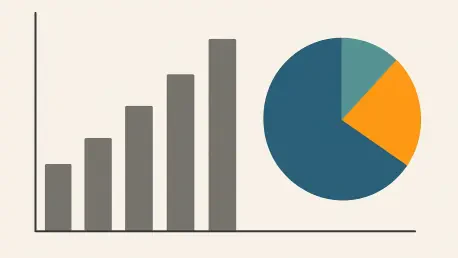Dive into the fascinating world of big data and unclaimed property markets with Chloe Maraina, a Business Intelligence expert whose passion for data science transforms complex datasets into compelling visual stories. With a keen eye for the future of data management and integration, Chloe offers unparalleled insights into the $68 billion unclaimed property market—a hidden treasure trove of opportunity. In this interview, we explore the vast potential of this underutilized sector, the technical challenges of data integration, the transformative power of machine learning, the business and investment prospects, and the exciting innovations on the horizon.
How would you describe the unclaimed property market, and what makes it such a massive $68 billion opportunity?
The unclaimed property market consists of dormant assets—think forgotten bank accounts, uncashed checks, or unclaimed insurance payouts—held by state treasuries and other custodians across the U.S. It’s valued at over $68 billion because millions of people and businesses lose track of their money or property due to life changes like moving, changing jobs, or simply forgetting about old accounts. These assets pile up in state records, waiting to be claimed. The sheer volume of these funds, combined with the public’s limited awareness, creates a huge opportunity for data-driven solutions to reconnect people with their money while opening doors for innovative products and services.
What do you think has kept this market from being fully tapped into until now?
Honestly, it’s a mix of awareness and technical barriers. Many people don’t even know unclaimed property exists or that they might have money waiting for them. On the technical side, the data is incredibly fragmented—spread across dozens of state systems with inconsistent formats and limited access tools. It’s a logistical nightmare to aggregate and make sense of it all. Plus, there hasn’t been a strong push historically to build user-friendly platforms or to integrate this data into everyday financial services, so the market has largely flown under the radar.
In what ways can industries like fintech or civic tech leverage unclaimed property data to create value?
There’s so much potential here. Fintech companies can embed alerts in banking apps to notify users if they’re likely linked to unclaimed assets, enhancing customer loyalty and engagement. Civic tech can develop tools that simplify the claiming process for the public, reducing administrative burdens on states while boosting claim rates. Beyond that, sectors like insurtech or wealth management can use this data to prevent assets from becoming dormant in the first place by identifying at-risk accounts early. It’s a win-win—industries innovate while helping people recover what’s theirs.
What are some of the biggest challenges in pulling together data from various state records into a unified system?
The biggest hurdle is the lack of standardization. Every state has its own way of structuring data—different field names, formats, and levels of detail. For example, one state might split owner names into first and last, while another just dumps everything into a single text field. Addresses can be a mess too, often based on outdated forms. You’ve got to build a robust mapping system to normalize all this into a consistent model, while also handling missing data, multiple owners, or historical changes. It’s like trying to translate 50 different dialects into one common language.
How does machine learning play a role in uncovering why people abandon their assets in the first place?
Machine learning is a game-changer for spotting patterns in asset abandonment. Using unsupervised techniques, we can cluster behaviors—like job changes, interstate moves, or banking disruptions—that often lead to forgotten assets. These insights help predict where unclaimed property might pile up next and which groups are most likely to recover their funds if prompted. It’s not just about finding the money; it’s about understanding the human behaviors behind why it got lost, so we can design better interventions.
Can you share how predictive modeling enhances the process of connecting people with their lost assets?
Absolutely. Predictive models, like those built with gradient boosting, analyze data signals alongside user behavior to estimate the likelihood that a match is genuine or that someone will follow through with a claim. For instance, if a user starts a search but drops off, the model can prioritize follow-ups based on their likelihood of completion. This prioritization means resources are focused on the most promising matches, making the whole process more efficient and increasing successful reunions between people and their assets.
What are the key financial considerations for a company looking to build a platform in this space?
Building a platform for unclaimed property data isn’t cheap. You’re looking at significant upfront costs for engineering—think data connectors to pull from state systems, schema mapping to standardize records, machine learning pipelines for matching, and identity resolution to ensure accuracy. But the revenue potential is strong. Companies can monetize through premium search features for power users, B2B subscriptions for professionals like financial advisors, or partnerships with fintechs for embedded services. The key is balancing those initial investments with scalable, recurring revenue streams.
Why do you see this market as an attractive long-term opportunity for businesses and investors?
It’s attractive because it combines a massive, untapped dataset with clear paths to value creation. With millions of records and constant updates, businesses that crack the code on data accuracy and user experience can build a defensible edge—think network effects and data moats. Investors are drawn to this because it offers recurring revenue potential through subscription models or partnerships, plus the social good angle of helping people recover lost money. It’s a rare mix of profit and purpose, with room to grow as more industries recognize the potential.
Looking ahead, what’s your forecast for the future of the unclaimed property market and its role in the broader data landscape?
I’m really optimistic about this space. I think we’ll see unclaimed property data become a cornerstone for broader financial health platforms, integrated into banking apps, wealth management tools, and even public services. Innovations like AI-driven notifications and blockchain for claim transparency could take things to the next level, though privacy and interoperability challenges need solving. Beyond that, the same data strategies could spill over into adjacent areas like property tax auctions or uncashed payroll checks. This market is just the beginning—it’s poised to reshape how we think about lost assets and data-driven recovery in the years ahead.









